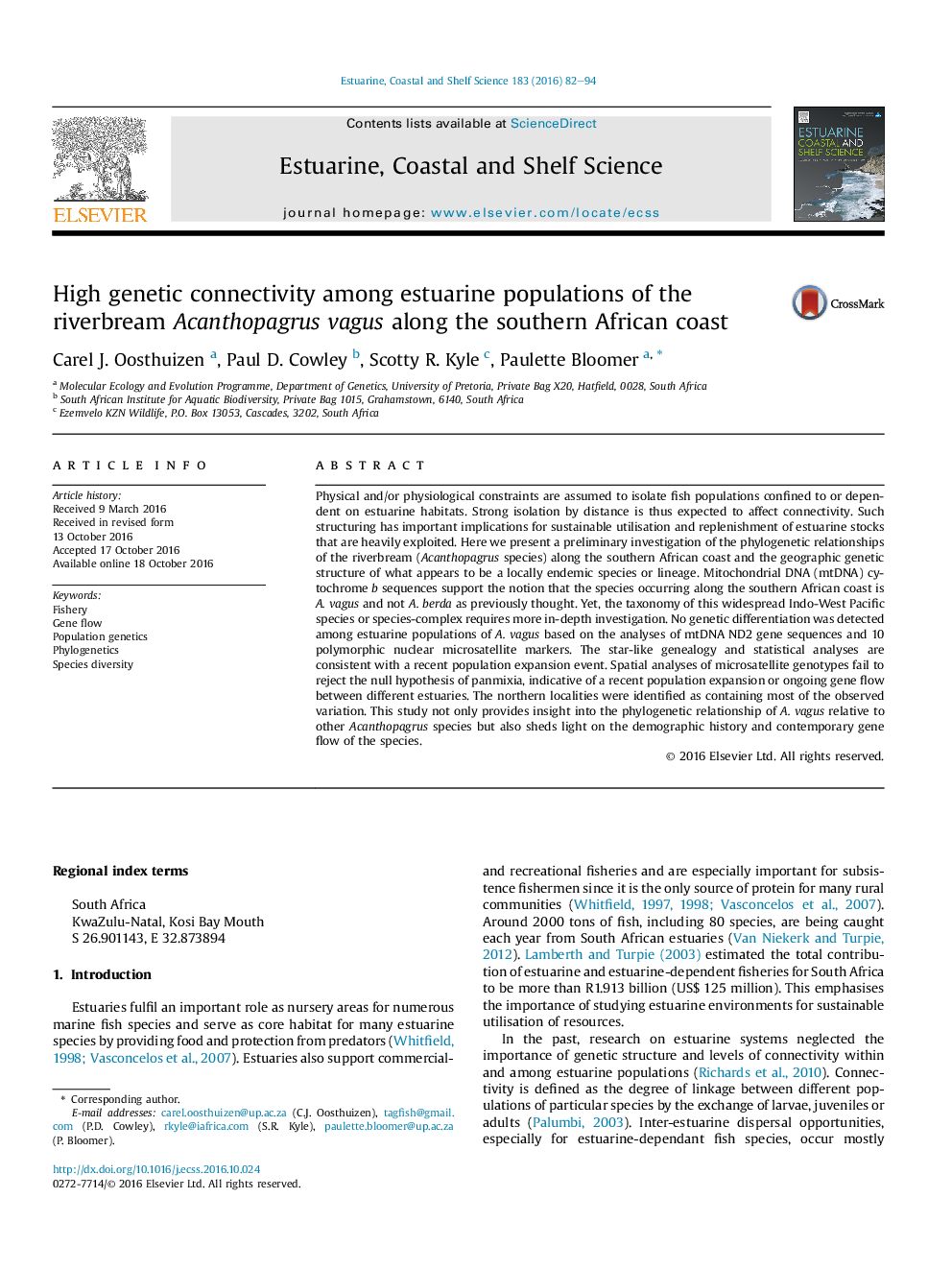| Article ID | Journal | Published Year | Pages | File Type |
|---|---|---|---|---|
| 6384415 | Estuarine, Coastal and Shelf Science | 2016 | 13 Pages |
Physical and/or physiological constraints are assumed to isolate fish populations confined to or dependent on estuarine habitats. Strong isolation by distance is thus expected to affect connectivity. Such structuring has important implications for sustainable utilisation and replenishment of estuarine stocks that are heavily exploited. Here we present a preliminary investigation of the phylogenetic relationships of the riverbream (Acanthopagrus species) along the southern African coast and the geographic genetic structure of what appears to be a locally endemic species or lineage. Mitochondrial DNA (mtDNA) cytochrome b sequences support the notion that the species occurring along the southern African coast is A. vagus and not A. berda as previously thought. Yet, the taxonomy of this widespread Indo-West Pacific species or species-complex requires more in-depth investigation. No genetic differentiation was detected among estuarine populations of A. vagus based on the analyses of mtDNA ND2 gene sequences and 10 polymorphic nuclear microsatellite markers. The star-like genealogy and statistical analyses are consistent with a recent population expansion event. Spatial analyses of microsatellite genotypes fail to reject the null hypothesis of panmixia, indicative of a recent population expansion or ongoing gene flow between different estuaries. The northern localities were identified as containing most of the observed variation. This study not only provides insight into the phylogenetic relationship of A. vagus relative to other Acanthopagrus species but also sheds light on the demographic history and contemporary gene flow of the species.
